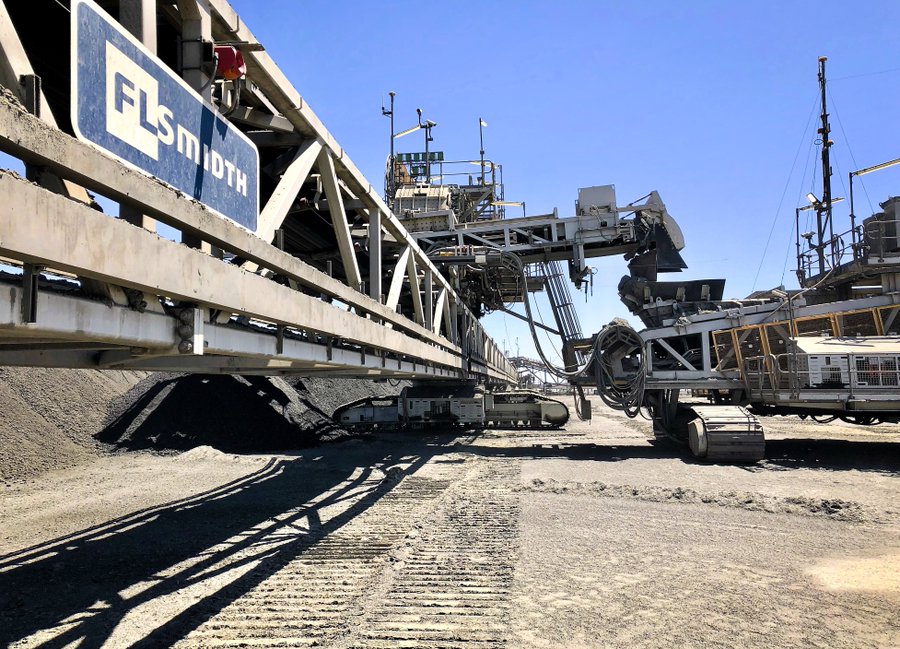Bis, FLSmidth and Karara Mining have developed a “unique mobile stacking conveyor” solution that has cut water use, costs and the environmental footprint at the iron ore miner’s operation in Western Australia.
If Karara’s iron ore mine had chosen a wet tailings storage facility, the tailings pond would have been roughly 8 sq.km based on its 30-year mine life, according to FLSmidth.
The operation is also in the Mid-West region of Western Australia, an area with scarce water reserves, so losing so much water to wet tailings would have been costly to both the environment and Karara’s bottom line.
With these factors in mind, Karara looked at implementing a dry-stacked/filtered tailings system to allow for significant water recovery and reuse. As well as reducing costs, dry stack technology would reduce the tailings footprint to around 4 sq.km, according to FLSmidth.
Bis worked with Karara and FLSmidth to develop a solution to build, own, operate and maintain a “unique mobile stacking conveyor”, FLSmidth said. This fixed infrastructure solution was developed by the three companies to integrate a walking conveyor and stacking technology normally used in large-scale copper mining operations.
Aside from the significant reduction of the physical footprint compared with the wet tailings alternative, Karara was looking for cost efficiencies in other areas, FLSmidth said. “For instance, the planning of a wet tailings storage facility needs to factor in an ongoing maintenance strategy. This comes with a perpetual cost that can only be guessed at while the decades pass,” the company said. “With dry-stack tailings, the total cost of ownership over the mine’s lifetime is easier to estimate and Karara were confident the dry stack solution would be cost competitive.”
Water usage was another key consideration for Karara. With environmental and cost factors in mind, Karara wanted to look at ways to have greater control over water assets on site. The ability to reuse and recycle water in the mining process would lead to substantial cost efficiencies by minimising the amount of makeup water needed for the mining operation, FLSmidth said.
The technology implemented into Karara’s tailings storage facility was also an important factor as Karara wanted the flexibility to continually update the equipment with the view of running it more efficiently as new technology became available. It engaged Bis to operate the facility machinery based on its deep industry experience with materials handling and bulk logistics, FLSmidth said.
FLSmidth, meanwhile, was identified by Karara as being able to meet the project’s requirements and mine-specific needs.
The mining OEM said: “A primary demand was the ability to supply a cost-effective dry stacking technology ideal for dry climate mining operations that reduced water requirements. With FLSmidth’s advanced stacking capability (machinery working off stacked pile) and ability to stack tailings at 15% moisture content, this meant tangible water savings for Karara.
“At Karara, the dry tailings will be stacked in four lifts to the maximum height approved by the Western Australia Government. The solution proposed by FLSmidth also created a smaller tailings storage footprint, which also meant improved site rehabilitation potential.”
Karara worked closely with Bis and FLSmidth to get the project off the ground and make Karara the first mine in Australia to take full advantage of this dry-stack technology, FLSmidth said.
The tailings storage facility is fast approaching the completion of Lift 1 and, together with Karara, Bis and FLSmidth are already in the planning stage to lift the equipment to the second level.











